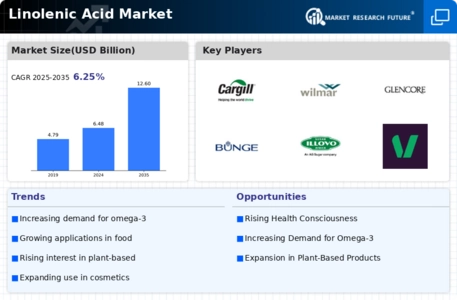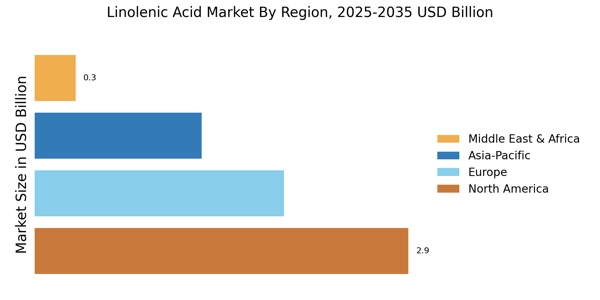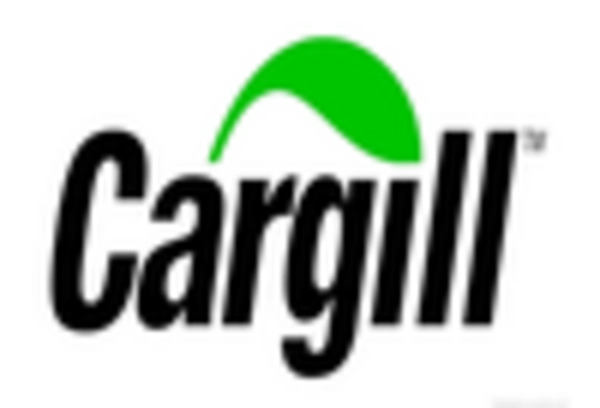Growth in Plant-Based Diets
The shift towards plant-based diets is significantly influencing the Linolenic Acid Market. As more individuals adopt vegetarian and vegan lifestyles, the demand for plant-derived sources of essential fatty acids, including linolenic acid, is expected to rise. This dietary transition is not only driven by health considerations but also by environmental concerns. The increasing popularity of plant-based food products, such as flaxseed oil and chia seeds, which are rich in linolenic acid, indicates a promising trajectory for the Linolenic Acid Market. Market analysts suggest that this trend could lead to a substantial increase in linolenic acid consumption in the near future.
Regulatory Support for Nutraceuticals
The Linolenic Acid Market is benefiting from increasing regulatory support for nutraceuticals and dietary supplements. Governments and health organizations are recognizing the importance of omega-3 fatty acids in promoting health and preventing diseases. This regulatory backing is likely to encourage manufacturers to invest in linolenic acid production and innovation. Furthermore, as regulations become more favorable, the market for linolenic acid-based products is expected to expand, providing consumers with more options for incorporating this essential fatty acid into their diets. This supportive regulatory environment may play a crucial role in shaping the future of the Linolenic Acid Market.
Increasing Demand for Omega-3 Fatty Acids
The rising awareness regarding the health benefits of omega-3 fatty acids is driving the Linolenic Acid Market. Consumers are increasingly seeking dietary supplements and functional foods rich in omega-3s, which are known to support cardiovascular health, reduce inflammation, and enhance cognitive function. According to recent data, the demand for omega-3 supplements has surged, with the market projected to reach substantial figures in the coming years. This trend is likely to bolster the Linolenic Acid Market, as linolenic acid serves as a precursor to omega-3 fatty acids, making it a vital component in various health products.
Technological Innovations in Extraction Processes
Technological advancements in extraction processes are likely to impact the Linolenic Acid Market positively. Innovations such as cold-press extraction and supercritical fluid extraction are enhancing the efficiency and yield of linolenic acid from plant sources. These methods not only improve the quality of the extracted oil but also reduce the environmental footprint associated with traditional extraction techniques. As manufacturers adopt these advanced technologies, the availability of high-quality linolenic acid is expected to increase, potentially driving down costs and expanding market access. This evolution in production methods may lead to a more competitive landscape within the Linolenic Acid Market.
Rising Applications in Cosmetics and Personal Care
The Linolenic Acid Market is experiencing growth due to its expanding applications in the cosmetics and personal care sector. Linolenic acid is recognized for its moisturizing and anti-inflammatory properties, making it a valuable ingredient in skincare formulations. The increasing consumer preference for natural and organic products is propelling the demand for linolenic acid in cosmetic formulations. Recent market data indicates that the personal care industry is projected to grow significantly, which may further enhance the utilization of linolenic acid in various beauty products. This trend suggests a promising outlook for the Linolenic Acid Market as it aligns with consumer preferences for clean beauty.


















Leave a Comment